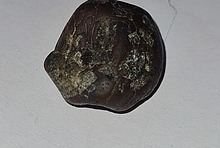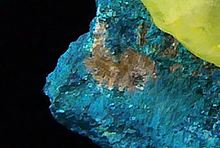Home PageAbout MindatThe Mindat ManualHistory of MindatCopyright StatusWho We AreContact UsAdvertise on Mindat
Donate to MindatCorporate SponsorshipSponsor a PageSponsored PagesMindat AdvertisersAdvertise on Mindat
Learning CenterWhat is a mineral?The most common minerals on earthInformation for EducatorsMindat ArticlesThe ElementsThe Rock H. Currier Digital LibraryGeologic Time
Minerals by PropertiesMinerals by ChemistryAdvanced Locality SearchRandom MineralRandom LocalitySearch by minIDLocalities Near MeSearch ArticlesSearch GlossaryMore Search Options
The Mindat ManualAdd a New PhotoRate PhotosLocality Edit ReportCoordinate Completion ReportAdd Glossary Item
Mining CompaniesStatisticsUsersMineral MuseumsClubs & OrganizationsMineral Shows & EventsThe Mindat DirectoryDevice SettingsThe Mineral Quiz
Photo SearchPhoto GalleriesSearch by ColorNew Photos TodayNew Photos YesterdayMembers' Photo GalleriesPast Photo of the Day GalleryPhotography
╳Discussions
💬 Home🔎 Search📅 LatestGroups
EducationOpen discussion area.Fakes & FraudsOpen discussion area.Field CollectingOpen discussion area.FossilsOpen discussion area.Gems and GemologyOpen discussion area.GeneralOpen discussion area.How to ContributeOpen discussion area.Identity HelpOpen discussion area.Improving Mindat.orgOpen discussion area.LocalitiesOpen discussion area.Lost and Stolen SpecimensOpen discussion area.MarketplaceOpen discussion area.MeteoritesOpen discussion area.Mindat ProductsOpen discussion area.Mineral ExchangesOpen discussion area.Mineral PhotographyOpen discussion area.Mineral ShowsOpen discussion area.Mineralogical ClassificationOpen discussion area.Mineralogy CourseOpen discussion area.MineralsOpen discussion area.Minerals and MuseumsOpen discussion area.PhotosOpen discussion area.Techniques for CollectorsOpen discussion area.The Rock H. Currier Digital LibraryOpen discussion area.UV MineralsOpen discussion area.Recent Images in Discussions
Fakes & FraudsMoldavite David Star

5th Mar 2013 21:35 UTCElmer Leee
Moldavite Website
5th Mar 2013 21:54 UTCOwen Lewis

5th Mar 2013 23:15 UTCElmer Leee
6th Mar 2013 00:24 UTCTomasz Praszkier Manager
6th Mar 2013 00:49 UTCOwen Lewis

6th Mar 2013 16:01 UTCElmer Leee

6th Mar 2013 16:24 UTCAlfredo Petrov Manager

6th Mar 2013 17:27 UTCElmer Leee

6th Mar 2013 17:33 UTCAlfredo Petrov Manager

6th Mar 2013 18:11 UTCElmer Leee

6th Mar 2013 18:23 UTCAlfredo Petrov Manager

6th Mar 2013 18:35 UTCElmer Leee
Moldavite Properties
Btw, how does lechatelierite inclusion look like?

6th Mar 2013 19:19 UTCElmer Leee

6th Mar 2013 20:19 UTCAlfredo Petrov Manager

6th Mar 2013 20:19 UTCElmer Leee

6th Mar 2013 20:35 UTCElmer Leee
12th Mar 2013 15:02 UTCOwen Lewis
FWIW, I've just completed a first examination of what looks like a splash-form piece, reputedly from Tyn nad Vltavou. The SG was 2.26.
12th Mar 2013 15:52 UTCUwe Kolitsch Manager

12th Mar 2013 16:04 UTCAlfredo Petrov Manager
Bouška studied natural glasses in general, not just moldavites, and he infected me with his passion for these objects, although some mineralogists disparage them as being outside the boundaries of true mineralogy.

4th May 2014 20:02 UTCMeliPers
I bought a moldavite aout 2 years ago, it had a gorgeous green look and its energy was fantastic, it still is, I have been wearing it everyday and placing it under my pillow at nights. but recently I noticed it became completely black and I can now barely see its transparency under direct light. WHY? does anyone have any idea? I though that perhaps sweat from the skin and heat could have damaged it, but this is a billion's year old stone supposedly created by high heat and impact in earth, it should have withstand all temperaatures...I am sooo confused, I don't know what to think about it becoming soo black.
5th May 2014 08:41 UTCRock Currier Expert

5th May 2014 11:08 UTCJeffrey Shallit

5th May 2014 17:52 UTCDoug Daniels




Mindat.org is an outreach project of the Hudson Institute of Mineralogy, a 501(c)(3) not-for-profit organization.
Copyright © mindat.org and the Hudson Institute of Mineralogy 1993-2024, except where stated. Most political location boundaries are © OpenStreetMap contributors. Mindat.org relies on the contributions of thousands of members and supporters. Founded in 2000 by Jolyon Ralph.
Privacy Policy - Terms & Conditions - Contact Us / DMCA issues - Report a bug/vulnerability Current server date and time: April 18, 2024 11:18:29
Copyright © mindat.org and the Hudson Institute of Mineralogy 1993-2024, except where stated. Most political location boundaries are © OpenStreetMap contributors. Mindat.org relies on the contributions of thousands of members and supporters. Founded in 2000 by Jolyon Ralph.
Privacy Policy - Terms & Conditions - Contact Us / DMCA issues - Report a bug/vulnerability Current server date and time: April 18, 2024 11:18:29











